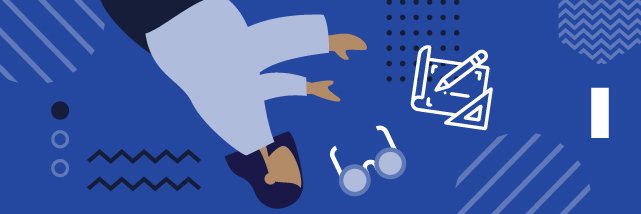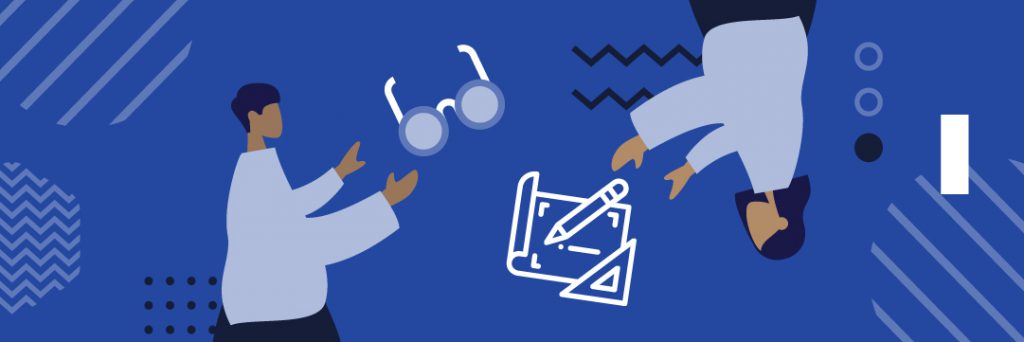Decades ago, the invention of computers and the internet took the world by storm, changing many aspects of life. Each time we think technology has done it all, a new invention comes into the picture, and we’re astonished all over again. Now it is simplifying the use of graphic design basic layouts like never before.
It is apparent how the digital revolution has had a significant impact on how we communicate and socialize. Graphic design basic layouts and other technological inventions allow business brands to target specific demographics with custom designs.
Today, a business cannot work on logos, portfolios, websites, presentations, or even architectural productions without a graphic designer’s input. Moreover, reputable business brands use graphics that reflect their passion for serving customers.
You also need a unique graphic design to persuade your prospective customer to buy your products. The same way you dress to impress each time you’re attending an important function, you should also use impressive graphics when advertising your products for the target audience to find them valuable.
Getting help from a professional who understands graphic design basics layout ensures your brand establishes a unique tone that differentiates it from the competition. Furthermore, your unique identity makes your business easily accessible to customers and prospects who want the products and services you offer.
Remember, distinguishing yourself from the crowd allows you to increase conversions and establish yourself as a leading brand in your industry.
Using Graphic Design Basic Layouts to Build a Unique Brand Identity
Your brand identity distinguished your business from the rest the same way your brand makes you unique. Interestingly, graphic design basic layouts are the special sauce your brand needs to become authentic and differentiable.
Setting your brand apart from your competition helps your customers see what you’ve got to offer.
Here is how to use graphic design to build a unique brand identity.
Establish what your business is about
Before you get a graphic designer involved, first establish what your business stands for. This knowledge will help you and the graphic designer you hire to identify the tangible design elements to build your brand.
Here are the key elements that make up a unique brand identity:
What Makes a Brand Unique?
- Your mission, i.e., the reason you started
- The business values, i.e., the beliefs you hold dear as a brand
- The brand personality (what video would your target audience when interacting with your brand?)
- What’s your brand’s unique positioning, i.e., the thing that differentiates you from rival businesses?
- Your band voice (the tone you use in communicating your brand message)
Each of these elements has a role they play in defining your brand, so before you start building your brand, ensure you’ve figured out all of them. A clear understanding of these elements will speed up the brand-building process because your graphic designer will have all the information they need.
How to Create a Unique Brand
Are you having trouble figuring out these brand elements? Here are questions to help you brainstorm and arrive and the right conclusions:
- What was my reason for starting the business?
- The values that make our company a brand that customers can trust
- That one thing we do better than our rival businesses
- Why would our brand stand out in a crowded marketplace?
- How would I describe my brand in three words?
- What three words would customers use to describe my business?
Build the foundation of your brand identity
Now that you’ve locked in what your brand stands for, it’s time to breathe life into it. Center your brand design around your target customer to make your business appealing and approachable.
You need a graphic designer for this stage, as they’ll help visually illustrate your unique brand elements. They use tangible design assets to control your brand’s narrative. Your logo, the website’s design, the graphics on your social media pages, your employees’ uniforms, and your business cards will govern your audience’s perception of the brand.
When you nail the design, you get a unique brand identity and this helps you build a successful business. Accurate representation of what you stand for ensures that you attract qualified customers.
Developing your brand design
For your brand identity to stand the test of time, you need to build it from the ground up. Locking in the graphic design basics layout from the onset allows you to navigate structure easily.
Here are the building blocks you need to build a unique brand identity:
- Typography
Typography refers to the font used in your branding material. Choose your fonts wisely because of how you write the marketing of your business as a trustworthy brand.
Do you want to give your brand a contemporary or a traditional feel? The typography you choose can help you establish either and so much more.
- Color palette
The next building block is color. Did you know that every color has the energy it emanates?
Therefore, your graphic designer will help you choose a color palette whose energy resonates with your brand identity.
- Shape/Form
The shape is a subtle but effective design element you need to consider when establishing a unique brand identity. Moreover, the form helps you reinforce the reactions you expect from your target audience.
Case in point, a logo designed with straight lines will inspire a different reaction from another that’s designed with circles.
Designing your brand identity
Now that you have everything ready, you can begin designing your brand identity. Even though you should hand it over to your graphic designer at this point, you can still contribute to the designing processes.
Stay in collaboration with the graphic designer throughout the designing process to lose nothing in the translation. You want to end up with tangible design assets you can use for marketing and advertising.
Graphic designers can express brand identities in many elements depending on what the business in question stands for. The nature of your business will govern which of the design assets are most important.
For instance, when designing a restaurant’s brand identity, graphic designers pay more attention to the menu because it’s the main thing customers interact with.
Let’s look at the common elements of a business’ brand identity:
- Logo
The logo is the cornerstone of the brand identity as it’s the first thing prospective customers encounter. As you build your brand identity, aim for a memorable brand logo.
Here are the five key boxes your logo should tick:
- Communicates what your brand stands for clearly
- It should be a visually appealing representation of your brand
- It must be a classic design that won’t ever go out of style
- Tows the lines of your industry’s standards
- It makes a lasting impression on your target demographics
As you hire a graphic designer to design multiple logo formats, remember to narrow down the one that best represents your business.
- Website
Your website is the virtual representation of your business, so the design needs to match what you have at your brick-and-mortar store. As a representative aspect of your brand identity, it helps customers establish your level of professionalism.
If you’re selling digital products, you don’t have a physical store to fall back on. Customers will use the website design to determine whether or not you’re the right business for them.
- Product packaging
Whether you’re selling a physical or a digital product, the way to go about the packaging will determine if you attract the right customers or not. The value of a good design can never be underestimated as it drives both repeat purchases and customer conversions.
- Business cards
Every business owner needs professional business cards they can issue to prospective customers. Stocking up on well-designed business cards allows you to use every opportunity you get to reinforce a favorable opinion of your brand among prospects.
- Email design
Email has always been a great way to drive sales and engage customers. However, most people’s inboxes are jammed with unopened emails because most businesses don’t know how to design emails that boost their open rates. If you want to engage your customers via email, settle for a design that will pique their interest.
The right design strategy for your email marketing campaigns sets your emails apart from the clutter. Thus, the purpose of your emails should guide you on the right design to use. You want to use email formats that boost readability and scannable.

Getting the Most out of Working with Graphic Design Basic Layouts
Successful customer experience depends on a wide variety of elements ranging from your website’s graphic design basics layout to your employees’ working environment. The approach you use to run your business is reflected in how your target demographics receive your brand.
Fortunately, graphic designers help you communicate a brand message that aligns with your beliefs so that your customers know how much you value them. That is why you need to make the most of every opportunity you get to work with a designer. Their mastery of design elements is vital in helping you achieve an engaging and approachable brand.
Many business owners overlook graphic design when it is such an essential aspect of customer experience. The slightest misplacement of imagery, typography, or color can unwittingly relay the wrong message to your audience.
Although you’re an expert at running a business, you cannot do for your business what a graphic designer is meant to cater to efficiently. This is an area where you need to call in the pros and let them do what they do best. Beyond that, how you work with them will determine the results you get.
Here is how to get the most out of working with a graphic designer.
Give your Graphic Designer Creative Leeway
The first thing you need to understand when you hire a graphic designer is that there is a chance you won’t be familiar with their approach. Nonetheless, give them creative leeway, rather than forcing them to do things your way.
If you require a professional to paint by the numbers, you won’t get your money’s worth on a project that requires design-centric execution. What you have in mind might be an excellent idea, but you have to let the graphic designer add their creativity to the equation.
Don’t let collateral damage get the best of you
If you’re reconstructing your brand’s identity, it is okay to have a connection to your old design. However, don’t let this emotional attachment get the best of you. If you go down this road, you might end up throwing reason out the window and give the graphic designer a hard time when they’re making the necessary changes.
Your emotional attachment to the image you used as your first website background is not reason enough to keep it. Remember, the graphic designer has a plan in mind, and every design element contributes to the overall appearance of the final product.
Settle on a per-project rate
A per-project rate is way better than paying by the hour because you never know how long the project will take. Besides, hourly payment tends to result in excessive paperwork that can lead to confusion.
Wrapping Up
Graphic design services are excellent for establishing a business’ unique brand. Hiring a graphic designer saves you from the hustle of figuring out the right design elements to use. All you have to do is convey the brand story you want the graphics to tell.
Remember, a design that sparks your audience’s attention will ensure you stand out in a crowd. Hence, find a graphic designer who can visually illustrate your passion for serving your customers.










